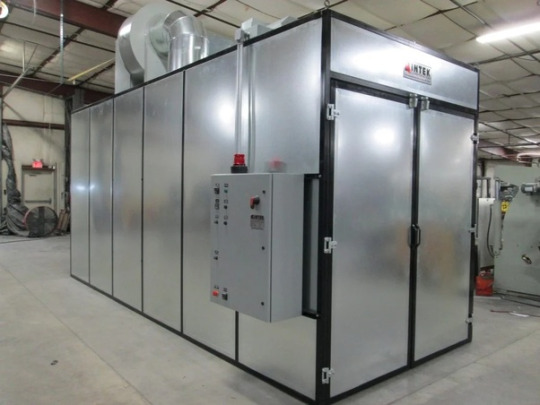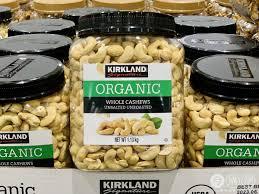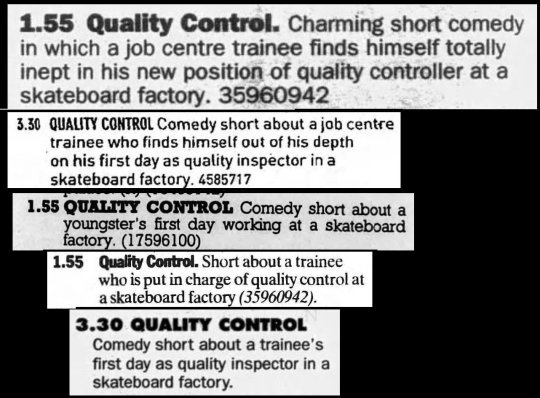#qualityControl
Explore tagged Tumblr posts
Text
Update: new info about David Tennant's elusive 1996 short film Quality Control!
I've got a few new updates to add to this post I did a while back about a short film David Tennant did in 1996 called Quality Control. If you haven't yet read my first post about this short film, you can read it at the link I posted above. And then come on back!
Firstly, Quality Control was broadcast many more times than I thought it was! I thought it was only broadcast four times between 1996 and 1998, so imagine my surprise when I did some digging and found it had actually broadcast eleven times between 1996 and 1999. Oops!
But by far the biggest update I have on this short is that recently I've discovered why it was made...and by whom!
But first, the updated broadcast list:
BROADCAST DATES:
1996:
4 Jan 1996 - 1:55pm - Channel 4
10 Jun 1996 - 1:55pm - Channel 4
9 Dec 1996 - 2pm - Channel 4
10 Dec 1996 - 1:30pm - Regional S4C
1997:
18 Jun 1997 - 10:45am - Regional S4C
25 Jun 1997 - 10:45am - Channel 4 & Regional S4C
1998:
8 Feb 1998 - 3:30pm - Channel 4
26 Oct 1998 - 1:30pm - Channel 4
6 Nov 1998 - 1:30pm - Regional S4C
1999:
18 Jun 1999 - 1:30pm - Channel 4
29 Jun 1999 - 1:30p - Regional S4C
Of course now that I've found these, I'm aware there may be other broadcast dates I have yet missed. If so, I didn't find any past 2000. But I reserve the right to be mistaken, ha!
Now here's the bigger update: the why, and the who!
Published 23 June 1995 in The Scotsman, here's the article that broke it wide open for me, and its relevant quote:
"Simplicity and technical finesse marked this year's graduation films at the Edinburgh College of Art degree show. While Hannah Lewis's Quality Control makes excellent use of a superior comic performance by David Tennant as a youth trainee on his first day in a Leith sweatshop…"

WOW, right?
But this new information leads to all sorts of other questions. If this short was initially part of a degree course, how did it make the leap to broadcast? Was it in one of the short film UK production schemes happening at the time which were helping new film creatives launch their ideas: i.e., First Reels, Tartan Shorts, New Found Land?
I'm not sure. At first blush, Quality Control doesn't seem to have been included in a larger broadcast of shorts like Bite and Spaces had been (Bite was shown on the program Don't Look Down on STV, and Spaces was shown on STV as a part of First Reels.) In its broadcast listings, Quality Control is always listed on its own.
The description the article gives on the short is also very interesting. The article says David played a youth trainee on his first day in a Leith sweatshop. But reviews and blurbs of the short's plot in newspapers say he was a job trainee who becomes a quality controller/inspector at a skateboard factory. It seems to me that a sweatshop and a skateboard factory are two very different places, but are they? Was that changed somehow between its showing at the College of Art degree show, or was it just the article writer's bad description?



Blurbs about Quality Control from various newspapers
And just who is Hannah Lewis, its creator? Well my money's on producer Hannah Lewis, who's worked with Morag McKinnon and Colin McLaren. They all met at the Edinburgh College of Art, and had made three shorts together by 1999 (one of which, 'Home', won a BAFTA!) But if she is the right Hannah Lewis, Quality Control isn't listed anywhere on her IMDb. So while I can't be sure she's the short's creator, the time is right, and the place is right. A lot of the dots sure do line up!
Now we know why it was done - and who did it - can we find it? Is it archived somewhere? I haven't found it so far if it is - at least it's not archived at the Moving Image Archive in Glasgow, or at the British Film Institute. But I've yet to check to see if the Edinburgh College of Art may have it.
As far as all the other questions this raises - like how did David get involved with the project (since he was living in London at the time) and if he knew someone who knew someone who...ya know? Pfffft. Your guess is as good as mine! It's one more "I dunno" to add to the pile.
In conclusion, we may be as close as we've ever been to finding out more about David's elusive 1996 short, Quality Control.
I'll keep on searching!
23 notes
·
View notes
Text

AI-powered #computervision systems are transforming how we ensure product quality in manufacturing! They don’t just spot flaws—they prevent them from ever reaching the consumer. What do you think about how #AI is reshaping industries? Drop a comment below!
👉🌐 https://www.pranathiss.com/our-products 👉📧 [email protected] 👉📲 +1 732 333 3037
#MachineLearning#ComputerVision#Manufacturing#QualityControl#Automation#Innovation#TechTrends#FutureOfWork
6 notes
·
View notes
Text
Industrial Batch Ovens: Everything You Need to Know About Their Mechanisms and Operation 🔥
Industrial batch ovens are crucial in modern manufacturing, offering flexible and controlled heating solutions for industries such as aerospace, automotive, food, and pharmaceuticals. Ideal for batch processes like curing, drying, aging, and sterilizing, these ovens provide precise control over temperature, time, and airflow, making them adaptable for diverse production needs.
Ready to optimize your manufacturing process? 🔥 Contact us today to find the perfect industrial batch oven for your needs!
Industrial Batch Ovens: Everything You Need to Know About Their Mechanisms and Operation - Quora

2 notes
·
View notes
Text



【Costco’s Brand Secret: They Even Monitor the Size of Cashews!】
Think Costco is just about bulk products at low prices? Guess what—they’re so meticulous they even control the size of their cashews and the number of peels on canned peaches! This isn’t a joke; it’s part of Costco’s genius in balancing quality and affordability. Today, let’s uncover how Costco’s obsession with details and cost-saving tricks turned them into a retail powerhouse! ✨
Kirkland Private Label: Quality, Not Cheapness
Kirkland isn’t your average low-cost brand—it’s the ultimate combination of “low price and high quality.” Every cashew has to be the same size, and every canned peach needs a precise number of peels. Yep, even your canned fruit gets the luxury treatment at Costco!
Where else can you feel like a fruit connoisseur while shopping for canned peaches? 🍑
Membership Program: A Psychological Masterstroke
"Want to shop here? Pay a membership fee first!" That’s Costco’s clever strategy. Their membership program creates an exclusive VIP feeling, and once you join, you’ll think twice before leaving. After all, if you’ve already paid for membership, might as well shop until it’s worth it, right? 💸
Minimal Product Selection, Minimal Advertising: Less is More
Costco’s philosophy is simple: offer fewer products, but make every item count. No need for aggressive marketing—one free sample session can do the trick. Who could say no to buying after enjoying a slice of pizza or a sip of wine? 🍕🍷
And those large bulk packages? Sure, you’re spending more upfront, but the lower unit cost makes it a smart buy. Suddenly, everyone feels like a wholesale expert: “Buying in bulk just makes sense!” 😎
Local Adaptation: From Rice to Organic Groceries
Costco knows how to win over local markets by tailoring their offerings. In Asia, they stock up on rice and seafood; in Europe, it’s all about organic products. No matter where they go, Costco finds a way to thrive. 🌍
Supply Chain Mastery: Running Lean and Passing the Savings
Costco works directly with manufacturers, cutting out middlemen and slashing distribution costs. No fancy shelves or elaborate displays—just stacks of products in a warehouse. It’s simple and efficient.
This lean operation lets Costco pass the savings directly to you. Brutally straightforward? Absolutely! But it’s why you get more value for your money. 🤝
Making Frugality a Lifestyle
Costco’s success isn’t just about bulk purchases or low prices—it’s a reflection of their obsession with quality. They’ve shown us that affordable goods can also be premium, and if a store cares enough to monitor the size of your cashews, why wouldn’t you trust them?
So, the next time you visit Costco, grab a Kirkland cashew jar or a can of peaches—and don’t forget to enjoy a few free coffee samples along the way. Saving money can be fun, and Costco has made it an art! 🎉
Costco: Meticulous to the max, unbeatable on value! 💪
resourse:https://www.expbravo.com/9918/costco-2.html,https://www.epochtimes.com/b5/24/5/11/n14246352.htm,https://www.daybuy.tw/costco/32992/,https://udn.com/news/story/120915/8173436
6 notes
·
View notes
Text
Save Big on GI Flanges-Get Lowest Prices with Udhhyog
In today's competitive industrial landscape, procurement efficiency is essential, especially when it comes to sourcing critical components like GI flanges. If you're looking for GI flanges at the lowest price, Udhhyog is here to help you save big while ensuring you receive top-quality products.
Understanding GI Flanges
Galvanized Iron (GI) flanges are essential components in piping systems, providing a reliable connection between pipes and fittings. They are favored for their corrosion resistance, which makes them ideal for various applications, including plumbing, water supply, and industrial processes. GI flanges are available in different types, such as slip-on, weld neck, and blind flanges, each serving specific purposes.
Why Choose Udhhyog for Your GI Flanges?
At Udhhyog, we understand the needs of Micro, Small, and Medium Enterprises (MSMEs) across India. We are dedicated to providing high-quality GI flanges at the lowest prices without compromising on quality. Here are a few reasons why Udhhyog stands out as your go-to supplier:
Quality Assurance: Our GI flanges are manufactured to meet international standards, ensuring durability and reliability in your applications. We prioritize quality to provide you with products that stand the test of time.
Competitive Pricing: We leverage our industry expertise and efficient supply chain management to offer the lowest prices for GI flanges in the market. With Udhhyog, you can procure the best without breaking the bank.
Wide Selection: Whether you need slip-on flanges, blind flanges, or any other type, Udhhyog has a comprehensive range of GI flanges to meet your specific requirements.
Fast Delivery: We understand that time is of the essence in your projects. Our streamlined logistics ensure that your orders are delivered promptly, allowing you to keep your operations running smoothly.
Flexible Credit Options: To support MSMEs, we offer a 45-day credit period, helping you manage cash flow effectively while ensuring you have access to the materials you need.
Applications of GI Flanges
GI flanges are commonly used in various industries, including:
Construction: For joining pipes in building projects.
Water Treatment: Ensuring secure connections in water supply systems.
Chemical Processing: Used in pipelines that transport chemicals and other fluids.
HVAC Systems: Connecting ducts and ensuring efficient airflow.
How to Order GI Flanges from Udhhyog
Ordering your GI flanges from Udhhyog is a seamless process. Simply visit our website and browse our range of products. You can easily find GI flanges at the lowest prices by following these steps:
Select Your Product: Choose the type and size of GI flanges you need.
Add to Cart: Once you've made your selection, add the items to your cart.
Checkout: Complete your purchase using our secure payment options.
Delivery: Sit back and relax as we process your order and deliver it to your doorstep.
#GFlanges#GIFlanges#Flanges#FlangeManufacturing#PipingSolutions#IndustrialSupplies#PipeFittings#LowestPrices#AffordableFlanges#SaveBig#CostEffective#BudgetFriendly#Industry-Specific Hashtags#Construction#WaterSupply#ChemicalProcessing#HVAC#IndustrialEquipment#Udhhyog#Engineering#Manufacturing#QualityControl#MSME#SupplyChain
5 notes
·
View notes
Text

Kanban in action! Visualize your workflow, identify bottlenecks, and improve continuously. 🔍💡
Visit http://vabro.com and try for free!!!!
#Vabro#Agile#Kanban#Lean#ProjectManagement#Kaizen#LeanManufacturing#ContinuousImprovement#TaiichiOhno#ProcessImprovement#QualityControl
2 notes
·
View notes
Text
Ultimate Guide to PCB Testing Methods: Ensuring Quality and Reliability in Your Circuits
In the electronics sector, Printed Circuit Boards (PCBs) are the life-lines of virtually all gadgets that are in use in the modern society. From humble home appliances to gigantic industrial equipment, PCBs are the skeletal framework of hardware organization and connection of circuit elements. It is vital to guarantee the quality and dependability of these fundamental parts – thus enters PCB testing methods. It is our hope that this extensive hand will help identify the most suitable test strategies for PCB testing, why these techniques matter, and how to maximize your circuits’ functionality.
Introduction

Firstly, an increase in the capability of different electronic devices leads to higher necessary requirements to the PCBs used in their production. Performing tests on the PCBs is an essential step in the manufacturing process done to confirm that a given board performs as a unit to the expected levels. This guide aims at explaining various techniques of PCB testing with a view of having a better understanding on how to achieve quality and reliability on the circuits.
Why PCB Testing is Crucial

PCB Testing When it comes to the potential defects on PCBs, there are shorts, opens, and some component placements. They can cause device failure, decline in performance level, and sometimes also pose safety issues. Through high-quality testing regimes, it becomes easier to address problems before they reach the customer, and thus manufacturers will have reliable and efficient products. Key reasons for PCB testing include:
Detecting Manufacturing Defects: Solder bridges, missing and placed in wrong position components, all can be detected in the initial stages easily.
Ensuring Functionality: Ensuring that the PCB does what is wanted and needed when it is in use, and under several conditions.
Quality Assurance: Ensuring that the business meets industry standards, and what clients require of them.
Cost Efficiency: Decreasing the likelihood of rework and recall by identifying possible defects before they get to the customer.
Types of PCB Testing Methods
These are the types of PCB Testing Methods:
Visual Inspection

Technique one as also referred to as the VI or visual inspection is the simplest and basic type of testing done on PCBs. The technique entails inspecting the board with naked eyes for some of the common faults including solder bridges, missing parts, and misalignment issues.
Automated Optical Inspection (AOI)

AOI employs cameras and software algorithms to check PCBs for defects and performs the inspections singly. This method of inspection is far more efficient than the manual inspection and simultaneously versatile enough to identify numerous problems.
X-ray Inspection

Some functions which include examination of features of BPCs that could not be easily inspected include solder joints under components through x-ray inspection. It is especially effective in inspecting defects in BGA (Ball Grid Array) and other various packages as well.
In-Circuit Testing (ICT)
ICT entails applying different voltage across the PCB to checks on the electrical characteristics of the needy part and connections. The use of this method is highly recommended for the identification of functional problems and verification of the circuit’s goodness.
Functional Testing (FCT)
Functional testing evaluates the effectiveness of the PCB pointing to the fact that it can be tested when placed in use. This method enables the certification of that the PCB works as expected under actual environment.
Flying Probe Testing
In flying probe testing, the probes are moved around to test the electrical properties of the created PCB. Lower to medium volume production runs can be made easily by using this technique; hence it is advantageous in this regard.
Boundary Scan Testing
Boundary scan testing also called as JTAG testing extends test circuitry into all the components for testing the connections between them. Although, this method is very efficient for identifying connection problems and faults.
Burn-In Testing
Burn-in testing puts the PCB in a state of operational stress for a long time to capture early-life failures. This aspect makes the method reliable for the long term since it is likely to identify problems that may occur when the equipment is in use for a long time.
Detailed Analysis of Each Testing Method works
These are the detailed analysis of each testing method works:
Visual Inspection
Pros:
Simple and low-cost
Determined to be a system for the reporting of noticeable defects as soon as they are observed.
Cons:
Time-consuming for complex boards
Limited to visible defects
Automated Optical Inspection (AOI)
Pros:
Fast and accurate
Is capable of detecting various kinds of defects.
Non-destructive
Cons:
High initial setup cost
May need to have better settings optimized for specific boards.
X-ray Inspection
Pros:
Examines hidden features
Ideal for complex packages
Cons:
Expensive equipment
Requires skilled operators
In-Circuit Testing (ICT)
Pros:
Thorough electrical testing
High fault coverage
Cons:
Requires custom fixtures
Not for all the boards or servers that you wish to build.
Functional Testing (FCT)
Pros:
Ensures real-world performance
Detects system-level issues
Cons:
Time-consuming
The mathematical test object can involve complex arrangements of test configurations.
Flying Probe Testing
Pros:
Flexible and adaptable
Cost-effective for small batches
Cons:
Slower than ICT for big volumes
Applicable only when the board is specially designed
Boundary Scan Testing
Pros:
Interconnections have high fault coverage.
Said; No need to have physical access to the test points
Cons:
Requires boundary scan-enabled components
Complex setup
Burn-In Testing
Pros:
Identifies early-life failures
Ensures long-term reliability
Cons:
Time-consuming and costly
Perhaps stressful to the board
Choosing the Right Testing Method
The choice of the appropriate method of PCB testing can be influenced by several factors such as the level of complexity of the PCB and the numbers of boards to be tested as well as the actual costs of the testing process and other features. Consider the following when choosing a testing method:
Board Complexity: Great board densities or component placement can be a determinant as to whether one needs AOI or X-ray inspection.
Production Volume: Applications that are characterized by high volumes can be easily facilitated by ICT while the low to medium volume applications may require flying probe testing.
Budget: Both manual inspection and AOI are favorable for various production volumes, while X-ray and ICT are more expensive at the beginning.
Specific Requirements: There are two types of the test, namely Functional Test and Burn-In Test that should be made so as to attain the long term reliability in applications that are critical.
Best Practices for PCB Testing
Using the best techniques in testing PCBs increases the quality and reliability of the circuits that you are working on. Here are some key practices to follow:
Early Testing: It is recommended to carry out the tests when the product is still in its design and manufacturing phase so that problems can be noted earlier before they reach a very catastrophic level.
Automate Where Possible: Use method such as automation to reduce the time and improve on the quality of the testing.
Regular Calibration: It is necessary to check if all the testing equipment used for calibration are accurate.
Comprehensive Coverage: This way, you will be able to ensure that there are no defects that are not tested as the best testing approach combines all types of testing methods.
Document Everything: Ensure that you keep records of the tests performed, the results obtained, as well as any measures taken to correct the breaches.
Common Challenges and How to Overcome Them
These are the common challenges and how to overcome them:
False Positives/Negatives
Automated testing methods maybe good some times, they give you the results that are either positive or negative and this will lead to unnecessary rework or more alarming leaving critical defects unfound. In order to avoid this, make sure that testing algorithms and testing equipment are updated and fine-tuned from time to time.
Component Access
Some of the testing techniques involve handling parts of the circuit and with high density board this can be very difficult. Some of the ways in which testbench implementation can be avoided are as follows Boundary scan testing and X-ray inspection.
High Costs
Some form of testing such as X-ray and ICT testing is often very costly. The effectiveness must come with reasonable prices; try to combine some of the mentioned approaches to cover all the aspects without spending too much money.
Future Trends in PCB Testing
About the future, it can be stated that its trends will be in fact linked to the tendencies in technologies and expectations towards ever higher quality and quantity of tested PCBs. Key trends to watch include:
AI and Machine Learning: Using of intelligence algorithms and machine learning in testing algorithms to enhance the efficiency and the minimization of false negative or false positives.
IoT and Smart Manufacturing: Higher testing flexibility and opportunities for the continuous test process supervision.
Advanced Imaging Techniques: The need for better techniques that would enhance the detection of defects within a printed circuit.
Environmental Stress Testing: More focus in the testing of PCBs under different environmental pressures in order to improve on its longevity.
Conclusion
Quality and reliability of packaged circuits have to be maintained to contribute positively in any electronic equipment. This paper seeks to explain the common testing techniques for PCB so that PCB manufacturers are able to test and see if they are free from defects and if they are functional. This ultimate guide will give you a full insight on the available options in PCB testing that will enable you make the best decision that will give you perfect circuits.
The aim is to help you understand how to attain the best quality of PCBs, what methods are worth following, and what trends drive future improvements, thus contributing to the quality of the final electronic products and, consequently, consumer satisfaction.
#PCBTesting#Electronics#CircuitBoard#QualityControl#Engineering#Technology#Manufacturing#IndustrialDesign#Tech#Innovation
2 notes
·
View notes
Text
SELECTIVE SOLDER 🔬🔥🔧
Selectively soldering components to printed circuit board (PCBs), while avoiding heat-sensitive parts - ensuring that only the desired areas are soldered, minimizing potential damage to the components and making high quality finished boards!
#adafruit#electronics#selective#solder#selectivesolder#pcb#opensource#opensourcehardware#manufacturing#factory#electronicsproduction#qualitycontrol#heatsensitive#componentprotection#circuitboards#innovation#precisionengineering#techmanufacturing
14 notes
·
View notes
Text
#SurfaceMetrology#PrecisionMeasurement#MetrologyTechnology#ManufacturingAdvancements#QualityControl#Industry4.0#TechnologyInnovation#RoughnessMeasurement#ContourMeasurement#ManufacturingIndustry#Automation#DigitalMeasurement#IndustryTrends#QualityAssurance#MetrologyStandards#EfficiencyImprovement#ManufacturingQuality#FutureTechnology#SurfaceProfiling#SmartManufacturing
2 notes
·
View notes
Text
David Tennant's Obscure Short Films: 1996's Quality Control
I'm back for a short(er) little David Tennant in Obscure Performances post today. Let's have a teeny-tiny chat about another rarity of David's, shall we? - a short film he did in 1996 called Quality Control. And when I say this is a rarity, believe me….it's a rarity.
I've at least been able to confirm David acted in this short film, for he mentions it as a film credit in two places: the 1996 programme for The Herbal Bed, and the 1997 programme for Hurly Burly - as evidenced by this cast listing of his from my Hurly Burly programme:


Quality Control has very little to no presence on the Internet, and there are only a few mentions of its existence. The first one I've been able to track which attributed the short to David was from a "David Tennant Fact Of The Day" post from May 2012.
The second mention is from the British Film Institute (BFI). If you study this notation, you'll notice another interesting detail: unlike many other works, the BFI does NOT hold any film or video materials relating to Quality Control. So they don't have a copy!
The BFI describes the film as a "comedy in which a job centre trainee finds himself totally inept in his new position of quality controller at a skateboard factory." But I hoped I might find a few other clues from another contemporary source: newspapers. So that's where I went!
All of the descriptions said Quality Control was a 20-minute short comedy - but I also learned it was the trainee's first day on the job, too. One can also assume (and I certainly do) David plays the role of the trainee. Here are some various listings I found:

What's very interesting, though, is something the BFI doesn't list: Quality Control was also re-broadcast two years later in 1998! The 'Fact of The Day' I mentioned earlier clued me into that detail, and that tidbit was invaluable in my search for mentions of the short. Why? Because this one's a real tough one to search. David's never mentioned in any printed synopsis, and seriously…just try to do a search using only the words, "Quality Control." It's an utter nightmare!
But knowing what I knew, I was able to add to the information the 'Fact Of The Day' had provided. Quality Control originally aired at 1:55p on 10 Jun 1996 on BBC Channel 4. In 1998, Channel 4 aired it two more times: on 8 Feb 1998 at 3:30p, and at 1:30p on 26 Oct 1998. It was also repeated regionally on S4C at 1:30p on 6 Nov 1998.
Its repetition in 1998 has intrigued me. It implies the BBC kept a copy of the short from 1996 to its re-air dates in 1998. The BFI listing for the short says it doesn't have a copy in its archives, but unless the BBC has subsequently erased it, a copy of that short might still exist. Somewhere. I'd love to find it, as it's one of the few things David did during that time I haven't seen. So we have no screenshots. But we know he did it. And who knows if the BBC has it in their archive.
But you know, maybe someone's got it recorded somewhere on an old Betamax tape.
34 notes
·
View notes
Link
Are you in search of high-quality sterile surgical gloves? Look no further than Guilin HBM Health Protections, Inc. As the top surgical gloves factory in China, we are dedicated to providing our customers with the best products possible. Each of our gloves goes through a rigorous inspection process, ensuring that they are 100% air inflated and inspected seven times before delivery. We take pride in delivering high-quality and safety medical gloves to our customers. Our annual production capacity is 800,000,000 pairs, making us the leading surgical gloves factory in China. We specialize in producing 100% blow-checked surgical gloves with a high AQL of 0.65. Our gloves are sterilized in-house using E-Beam sterilization, ensuring the highest level of safety and quality. We are proud to have received several certifications, including CE, EN455, ISO13485, FDA 510K, SATRA, PPE, and CCPIT certifications. Our clients include well-known organizations such as Medline, UNICEF, UN Migration, and UNOPS. At Guilin HBM Health Protections, Inc., our team is composed of over 2,000 dedicated professionals who are committed to providing our clients with the best service possible. We take pride in our work and are dedicated to making sure our customers receive the best products and services. So why wait? Visit our website at surgicalgloves.com to learn more about our products and services. And if you have any questions or would like to place an order, our team is here to help. #SterileSurgicalGloves#SurgicalGlovesFactory#MedicalGloves#EBeamSterilization, #QualityControl
2 notes
·
View notes
Text

#VBK Architects & Engineers#For More Information Contact:6362695891#Email-ID:[email protected]#Architects#Engineers#QualityControl#QualityControlPodcast#engineering#architecture#EngineeringManagementInstitute#projectmeetings#mentorship#qualitycontrolonprojects#teamcommunication
3 notes
·
View notes
Text
The Importance of Raw Material Analysis in Pharmaceuticals
In pharmaceutical manufacturing, everything starts with raw materials. These ingredients form the foundation of every drug, making their quality, identity, and purity critical. Without proper analysis, even a minor impurity can affect product safety, shelf life, or compliance with regulatory standards.
Why is raw material analysis important?
✅ Ensures safety and efficacy of the final product
✅ Detects impurities, contamination, or variations
✅ Helps meet pharmacopeial and regulatory requirements
✅ Supports consistent formulation and production quality
✅ Reduces the risk of product recalls or failure
Pharmaceutical labs must perform tests like identification, purity checks, heavy metal screening, and microbial testing on all incoming raw materials. Whether natural or synthetic, each material must be verified before entering production.
In short, testing raw materials is not optional—it’s essential for safe, compliant, and effective pharmaceuticals.
1 note
·
View note
Text
All About Flange-Udhhyog
Q1: What are the different types of flanges, and how do I choose the right one for my application?
A1: There are several types of flanges, including:
Weld Neck Flanges: Designed for high-pressure applications and welded to the pipe, providing a strong connection.
Slip-On Flanges: Slide over the pipe and are welded both inside and outside, ideal for low-pressure applications.
Blind Flanges: Used to close the end of a piping system, preventing the flow of fluids.
Socket Weld Flanges: For small-diameter pipes, where the pipe is inserted into the flange and welded.
Lap Joint Flanges: Used with a stub end, allowing for easier disassembly.
To choose the right flange, consider the application pressure, temperature, pipe size, and the type of connection required.
Q2: How do flange standards vary by country, and what should I know about them?
A2: Flange standards can vary significantly between countries. For instance:
ANSI (American National Standards Institute): Commonly used in the USA, focusing on pressure ratings and dimensions.
DIN (Deutsches Institut für Normung): Widely used in Europe, specifying metric dimensions and pressure ratings.
JIS (Japanese Industrial Standards): Used in Japan, similar to ANSI but with different specifications.
When selecting flanges, be aware of the applicable standards in your region to ensure compatibility with existing piping systems.
Q3: What materials are commonly used for flanges, and what are their advantages?
A3: Common materials for flanges include:
Mild Steel (MS): Cost-effective and suitable for low-pressure applications.
Stainless Steel: Corrosion-resistant and ideal for high-pressure and high-temperature applications.
Carbon Steel: Offers strength and durability for industrial applications.
Alloy Steel: Used for specialized applications requiring high strength and resistance to wear and corrosion.
The choice of material should be based on the operating environment, pressure, temperature, and the medium being transported.
Q4: How can I prevent leakage in flange connections?
A4: To prevent leakage in flange connections:
Use Quality Gaskets: Select the right gasket material based on the application and ensure proper installation.
Ensure Proper Alignment: Misalignment can lead to leaks; ensure that flanges are correctly aligned before tightening.
Tighten Bolts Uniformly: Follow the manufacturer's specifications for bolt torque to ensure even pressure distribution.
Regular Maintenance: Inspect flanges periodically for wear or damage and replace gaskets as necessary.
Q5: What are the most common applications for MS flanges in various industries?
A5: MS flanges are commonly used in:
Oil and Gas: Connecting pipelines and equipment.
Water Supply: Used in municipal and industrial water systems.
Construction: In various structural applications for strength and support.
Manufacturing: In machinery and equipment to facilitate fluid flow and pressure control.
Q6: How does the price of flanges fluctuate in the current market?
A6: The price of flanges can fluctuate based on several factors:
Material Costs: Increases in raw material prices can lead to higher flange costs.
Supply Chain Issues: Disruptions in manufacturing or transportation can affect availability and pricing.
Market Demand: Increased demand in specific industries can drive prices up.
Regularly monitoring market trends and supplier prices can help you anticipate changes.
Q7: What are the benefits of using stainless steel flanges over mild steel flanges?
A7: Benefits of using stainless steel flanges include:
Corrosion Resistance: Stainless steel can withstand harsh environments, making it suitable for chemical and coastal applications.
Strength and Durability: Offers better strength-to-weight ratios and longevity compared to mild steel.
Aesthetic Appeal: Stainless steel has a polished finish that is visually appealing in exposed applications.
However, stainless steel flanges are typically more expensive than mild steel flanges.
Q8: How do I determine the right flange size for my piping system?
A8: To determine the right flange size:
Measure the Pipe Diameter: Determine the outer diameter of the pipe.
Check Pressure Ratings: Ensure that the flange matches the pressure rating of the piping system.
Refer to Standards: Use ANSI, DIN, or other relevant standards to find the corresponding flange dimensions for your pipe size and pressure requirements.
Q9: What is the significance of flange pressure ratings?
A9: Flange pressure ratings indicate the maximum pressure a flange can withstand at a specified temperature. They are essential for:
Safety: Ensuring that the flange can handle the operational pressures without failing.
Compatibility: Matching flanges with piping and equipment rated for similar pressures prevents leaks and accidents.
Understanding pressure ratings helps in selecting appropriate flanges for your application.
Q10: Are there any recent advancements in flange manufacturing technology?
A10: Recent advancements in flange manufacturing technology include:
3D Printing: Allowing for rapid prototyping and customized designs.
Improved Materials: Development of new alloys that enhance corrosion resistance and strength.
Automation: Use of automated machinery for precision and efficiency in flange production.
Quality Control Technologies: Enhanced inspection techniques using non-destructive testing methods to ensure product integrity.
These advancements contribute to better quality, reduced production times, and cost savings in flange manufacturing.
#Flanges#MSFlanges#FlangeManufacturing#PipingSolutions#IndustrialEquipment#PipingIndustry#FlangeDesign#FlangeStandards#FlangeApplications#MechanicalEngineering#MildSteel#StainlessSteel#CarbonSteel#AlloySteel#OilAndGas#Construction#WaterSupply#Manufacturing#Engineering#ManufacturingInnovation#IndustrialSupply#QualityControl#SafetyFirst#TechAdvancements
5 notes
·
View notes
Text
Precision Notching Starts Here – Meet the Standard in Double-Notch Accuracy

When it comes to high-precision sample preparation, the Testron Coplanar Double Notch Machine sets the industry benchmark. Specially engineered for ultra-high molecular weight polyethylene ( PE-UHMW ) materials, this machine delivers unmatched consistency and performance for impact strength testing.
Why Leading Labs Trust It:
Simultaneously creates two perfectly aligned notches on both sides of the specimen Ensures centerline precision with a unique dual-knife synchronized design Integrated electronic micrometer offers consistent, reliable depth measurement Delivers high blade durability-only axial force is applied, reducing wear Tailored for FNCT, PENT, and Charpy impact test preparation
Whether you're testing for failure resistance or long term durability, this equipment ensures your samples are flawlessly prepared for high-stakes performance testing.
Built for specialists. Trusted by industry. Precision preparation starts with the right notch, start with Testron.
#MaterialTesting#DoubleNotchMachine#QualityControl#TestingEquipment#NotchTester#ImpactTesting#LaboratoryEquipment#TestronGroup#CoplanarNotch#TTDN50
0 notes
Text
Quavo & Takeoff Reignite Unc & Phew Energy On “Dope Boy Phone”
The trap don’t sleep, and neither does legacy. With booming bass, melodic swagger, and bittersweet brilliance, Quavo drops his third release of the year. Dope Boy Phone is a tribute to timeless chemistry featuring a posthumous verse from Takeoff. The track not only stirs nostalgia for Migos’ golden days but reminds fans that real storytelling never fades. Quavo’s unmistakable flow sets the tone,…
0 notes